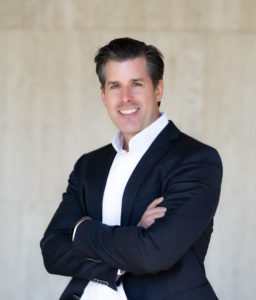By Brian Walsh
Addressing climate change is one of the most urgent challenges of our lifetime. One way to curb global temperature rise is through CCUS, or carbon capture, utilization and sequestration. The technology, which removes carbon dioxide before it enters the atmosphere and either stores or repurposes it into products, has been around since the 1970s. Until recently, however, it has been limited to large-scale projects involving plants with massive air contactor systems and a series of giant fans.
Search less. Close more.
Grow your revenue with all-in-one prospecting solutions powered by the leader in private-company data.
Most regular people know little about these plants. The technology is also expensive, and until the penalty cost of releasing carbon into the air increases, there is little economic incentive to use it. Because of this, CCUS has been an overlooked technology mostly relegated to niche corners of the energy community. Only 21 large-scale CCUS commercial projects around the globe exist.
A flourishing CCUS ecosystem
That’s changing, and the momentum for CCUS has reached a pivotal moment in 2022. First, there is increased clarity that carbon capture is crucial to mitigating climate change by 2050. There is now a collective understanding that there will be countries, industrial sectors and so on, that will not or cannot meet the carbon reduction goals. Carbon capture will be the way to make up for those shortfalls, and this is spurring innovation.

The aspirations are to make carbon distributed, digital and democratic—just like renewable energy. For example, solar that can be placed at the point of demand (distributed) is enhanced via digital layers (monitoring, etc.), and gives control to the user (democratic). These dynamics have been a significant part of solar energy’s success, versus deploying large central plants connected to the traditional utility grid.
Money and infrastructure are now pouring in to achieve these aspirations. On Earth Day this April, Elon Musk and XPRIZE announced the first milestone winners in a $100 million carbon removal competition. Funds are cropping up dedicated solely to the development and scale-up of carbon removal startups. And organizations like AirMiners are bringing together entrepreneurs, researchers and funders, and offering intensive courses on how to start and scale CCUS businesses.
A growing number of interesting carbon capture startups are creating marketplaces to add efficiency to carbon accounting and credit trading. Others are building new technologies to capture or sequester carbon in new, easier ways.
What will it take to make carbon capture pervasive?
Just like solar, carbon capture is becoming smaller and more local, reducing its costs and making it more bankable. Entrepreneurs are incorporating carbon capture into the built environment with local value propositions. There are many ways to sequester carbon in the built environment. Remora, Noya, CleanO2 and CarbonQuest are just some examples of this.
Key to doing this well is creating economic incentives that appease the different stakeholders within the more complicated local environment. But imagine the tremendous impact if there is a carbon capture contribution, fully endorsed by all needed stakeholders, at every building, diesel truck or warehouse.
Success will hinge on three factors. First, costs will have to come down to expand the offtake markets. Second, the technology will need to improve to boost sequestration profiles. Capturing carbon only to release it again can have limited impact for climate change mitigation. And third, new types of technologies and business models will be required to explore different ways of making carbon capture proliferate, such as more local use cases.
A final word
Fixing climate change will take investment in multiple forms of clean energy, as well as in carbon-limiting solutions such as electric vehicles. But we have to do more. A holistic solution to climate change will require removing about 100 parts per million CO2 from the atmosphere, and among the most promising solutions is CCUS. Carbon capture is poised to go from the first-generation, large-project approach to a next-generation, localized approach with multiple creative applications. From 2022 onward, we’ll see a fascinating, beneficial new industry emerge.
Brian Walsh serves as managing partner and founder at Wind Ventures in San Francisco. Wind Ventures is the strategic venture capital group for Copec, a leading energy, mobility and retail corporation with dominant market shares throughout Latin America and the United States.
Illustration: Dom Guzman

Stay up to date with recent funding rounds, acquisitions, and more with the Crunchbase Daily.






67.1K Followers